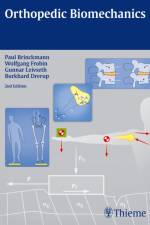av Paul Brinckmann
997
FOUR STARS from Doody''s Star Ratings™The expanded and fully updated second edition of Orthopedic Biomechanics explains the effects of mechanical influences on the musculoskeletal system and highlights the importance of biomechanical knowledge in the prevention, treatment, and rehabilitation of orthopedic injuries and disorders. Clear and concise discussion of the forces acting on bones, tendons, and ligaments facilitates a solid understanding of current and past research, complex concepts, and technical information in orthopedic biomechanics. Readers will also find practical guidance for applying their knowledge to solving actual clinical problems.The book begins by summarizing the basic principles of biomechanics and mathematical theory, including biomaterials science, vector algebra, and movement in two and three dimensions. It then moves on to the mechanical properties of musculoskeletal tissues, with chapters devoted to muscle and muscle function; the modeling of joint loads; gait analysis; and the mechanical aspects of the hip, knee, spine, shoulder, and foot.Key Features:New "Solved Problems" chapter with clinically relevant biomechanical questions and their step-by-step solutions using mathematical and mechanical reasoningNew chapters on biomechanics of the foot and gait analysisDetailed descriptions of simplified model calculations for determining static and dynamic joint load-a fundamental issue in orthopedic biomechanicsEssential physics and mathematics only, with limited use of complex vector equationsMore than 300 line illustrationsReferences and suggestions for further reading at the end of each chapter, serving as an overview of scientific work on the topicOrthopedic Biomechanics, 2nd Edition, is an essential resource for practitioners and students of orthopedics, orthopedic surgery, prosthetics and orthotics, and physiotherapy. Comprehensive in scope but approachable in coverage, the book provides the insights and tools needed to make informed clinical decisions.

